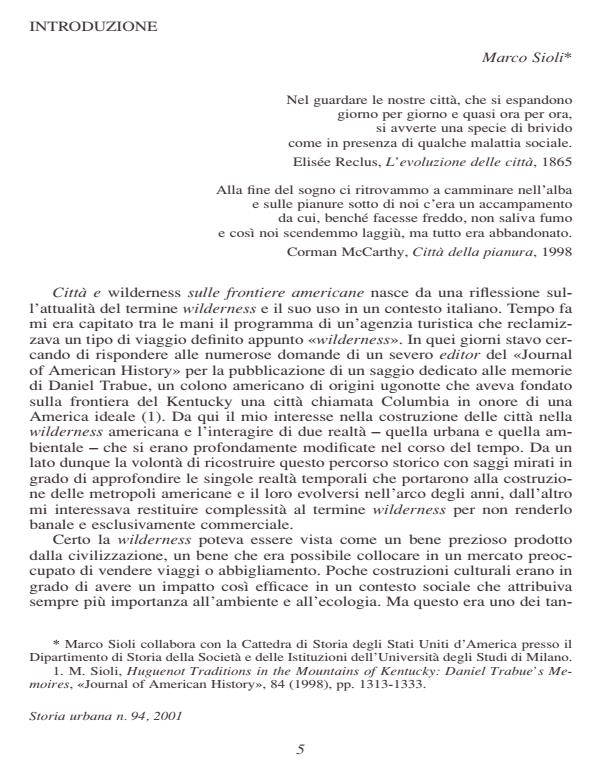Introduzione
Titolo Rivista STORIA URBANA
Autori/Curatori Marco Sioli
Anno di pubblicazione 2002 Fascicolo 2001/94
Lingua Italiano Numero pagine 12 P. Dimensione file 59 KB
DOI
Il DOI è il codice a barre della proprietà intellettuale: per saperne di più
clicca qui
Qui sotto puoi vedere in anteprima la prima pagina di questo articolo.
Se questo articolo ti interessa, lo puoi acquistare (e scaricare in formato pdf) seguendo le facili indicazioni per acquistare il download credit. Acquista Download Credits per scaricare questo Articolo in formato PDF

FrancoAngeli è membro della Publishers International Linking Association, Inc (PILA)associazione indipendente e non profit per facilitare (attraverso i servizi tecnologici implementati da CrossRef.org) l’accesso degli studiosi ai contenuti digitali nelle pubblicazioni professionali e scientifiche
This number follows the collection of essays under the same title - Cities and Wilderness on the American Frontiers - published in «Storia urbana», 87 (1999). The first issue analyzed the origins of the word «wilderness» and the many meanings this word assumed during the age in America: from the colonization - with the destruction of the wilderness and the creation of the cities - to the cultural and practical reevaluation of the wilderness and its reappearance into American metropolis. The cities treated in the first number were Shamokin, San Antonio, Cooperstown, Dodge City and Santa Fe. The following essays - written by a balanced group of American and Italian scholars - go deep in this study adding new topics that get lost in the first number, such as: agricultural capitalism, industrialization and deindustrialization, race, environment, politics, and ecology. These arguments are applied to the following cities: Lexington, Concord, Pittsburgh, Birmingham, Knoxville, New York, and Washington. Reading all together both these numbers will allow the reader to rethink the many aspects beyond the basic concepts of the American way of life. The relation among city, wilderness and frontier appears as a cultural path not linear but circular. The destroyed wilderness comes back in the city as well as the frontier takes a revenge on colonization and the land, abandoned by the settlers, reacquires its original state.
Marco Sioli, Introduzione in "STORIA URBANA " 94/2001, pp , DOI: